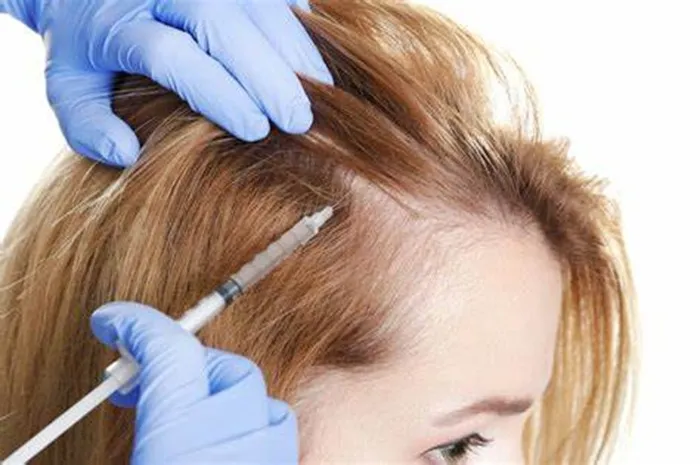Hair loss is a complex and multifaceted issue that affects millions of individuals worldwide. As a hair transplant specialist, I often encounter patients who are seeking solutions to restore their hair and improve their confidence. One of the most frequently asked questions is whether it is ever too late to benefit from Platelet-Rich Plasma (PRP) therapy. In this article, we will explore the nuances of PRP treatment, the stages of hair loss, and the factors that determine its efficacy.
Understanding PRP Therapy
PRP, or Platelet-Rich Plasma, is a cutting-edge, non-surgical treatment that harnesses the body’s natural healing abilities to promote hair growth. PRP is derived from the patient’s own blood, which is processed to isolate a high concentration of platelets. These platelets contain growth factors that stimulate hair follicle activity, enhance blood flow to the scalp, and reduce inflammation. When injected into the scalp, PRP can potentially reawaken dormant hair follicles and improve overall hair health.
The Stages of Hair Loss
To determine whether PRP is still a viable option, it is crucial to understand the stages of hair loss. Hair loss typically progresses through several phases, classified by the Norwood Scale for men and the Ludwig Scale for women.
Early Stages (Norwood I-II / Ludwig I): These stages involve minimal hair thinning and are often characterized by a receding hairline or slight thinning on the crown. PRP is highly effective at this stage, as the hair follicles are still relatively healthy and responsive to treatment.
Moderate Stages (Norwood III-IV / Ludwig II): Hair loss becomes more noticeable, with a more pronounced receding hairline and significant thinning on the crown. While PRP can still be beneficial, the results may be more modest compared to the early stages. In these cases, PRP is often used in combination with other treatments, such as minoxidil or low-level laser therapy.
Advanced Stages (Norwood V-VII / Ludwig III): At this stage, hair loss is extensive, with significant balding on the crown and temples. The hair follicles may have become severely damaged or dormant. PRP alone may not be sufficient to achieve significant hair regrowth. However, it can still play a supportive role in maintaining existing hair and improving scalp health.
Factors That Influence PRP Effectiveness
While the stage of hair loss is a critical factor, several other elements can impact the efficacy of PRP therapy.
Age: Younger individuals generally have healthier hair follicles and better overall scalp health. PRP is often more effective in younger patients with early to moderate hair loss. However, older individuals can still benefit from PRP, especially when combined with other treatments.
Underlying Causes: Hair loss can be caused by various factors, including genetics, hormonal imbalances, stress, and lifestyle choices. PRP is most effective for hair loss caused by androgenetic alopecia (male or female pattern baldness). For other types of hair loss, such as telogen effluvium or alopecia areata, PRP may be used as part of a comprehensive treatment plan.
Overall Health: A healthy lifestyle can support better hair growth outcomes. Patients with underlying medical conditions, such as diabetes or thyroid disorders, may experience less optimal results. Additionally, smoking and poor nutrition can negatively impact hair health and PRP efficacy.
Response to Previous Treatments: Some individuals may have already tried other hair restoration methods, such as minoxidil or finasteride, with limited success. PRP can be used in combination with these treatments to enhance their effects. However, if previous treatments have not shown any improvement, it may indicate that the hair follicles are less responsive.
Other Influencing Factors
Overall Health and Underlying Conditions
A patient’s overall health and any underlying medical conditions can impact the success of PRP treatment. Conditions such as thyroid disorders, autoimmune diseases, and nutritional deficiencies can disrupt the normal hair growth cycle. If these underlying conditions are not properly managed, PRP may not be able to achieve optimal results. For example, in a patient with an untreated thyroid disorder, the hormonal imbalances can counteract the effects of PRP. Additionally, if a patient has a weakened immune system due to certain medications or chronic illnesses, the body’s ability to respond to the growth factors in PRP may be compromised. In such cases, it is essential to address the underlying health issues first before considering PRP treatment.
Previous Treatments and Their Impact
Previous hair loss treatments can also influence the effectiveness of PRP. For individuals who have already undergone multiple rounds of aggressive treatments, such as high – dose medications or repeated laser therapies, the hair follicles may have sustained additional damage. This can make it more challenging for PRP to stimulate regrowth. Similarly, if a patient has had a hair transplant and the transplanted hair is not growing properly due to poor blood supply or other complications, PRP may not be the best solution without first addressing the underlying issues from the transplant.
Conclusion
PRP therapy is a versatile and non-invasive option for addressing hair loss. While it is most effective in the early to moderate stages, it is rarely too late to consider this treatment. PRP can provide benefits at any stage of hair loss, from maintaining existing hair to improving scalp health and supporting hair transplant results. If you are concerned about hair loss, it is essential to consult with a qualified hair restoration specialist who can assess your individual needs and recommend the most appropriate treatment plan. Remember, the journey to healthier hair begins with understanding your options and taking proactive steps towards restoration.
Related topics:
How to Choose a PRP Treatment?
What Are the Three Types of PRP?


